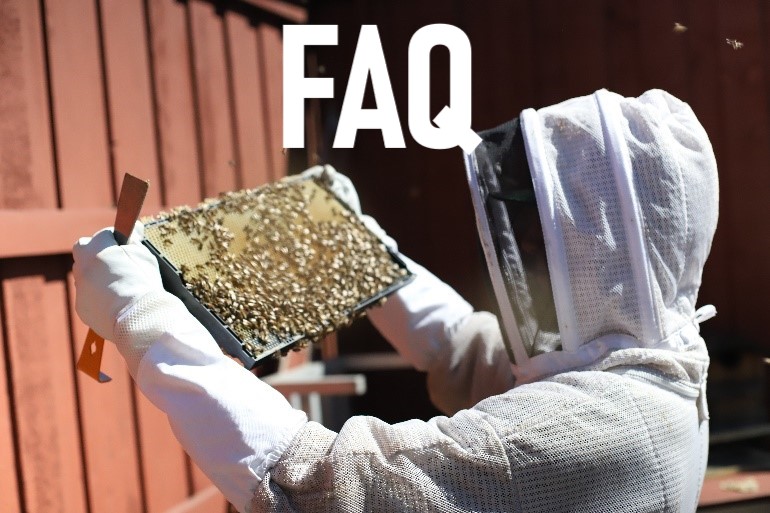
A Bee's Life
A honeybee's life is quite full as they spend their days caring for their colony. Each day is full of purpose as queen bees upkeep colonies by laying upwards of 2,000 eggs a day (some rare cases speak of 3,000); drone bees actively seek to mate and pass their genes; and worker bees take care of the hive with responsibilities that evolve with age.
Today, we are going to focus on the life cycle and roles of a queen, worker bee, and drone in a healthy hive (we will save colony collapse scenarios for another day so this article may focus on the specifics of bee life cycles). The queen's section will be split into four focal elements; the worker bee section will have a day-by-day evolution of responsibilities; and the drone will focus on their singular, significant importance. As a conclusion, we will address how urban beekeeping affects the bees' lifestyles.
Prelude: Perspective
Over the next couple of minutes, you will get a walk through the life of all three castes of a bee: queen, worker, and drone. To give some perspective on their roles, we will first address their life expectancies.
A drone will live three to five weeks. A worker bee will live five to seven weeks in the summer; a winter worker bee can live up to six months, though (there is a difference in workload and biology). A queen generally lives three to six years.
Headquarters
A queen is the central role of a hive; she is the central signal that a hive revolves around. The queen produces pheromones (chemical substances secreted and detected by smell, in the case of honeybees) encoded with important messages and influences, such as making workers disinterested in mating. Overall, a queen's pheromones maintain the hive by affecting the behavior of her colony.
Beyond her central signal of control, her primary purpose is to reproduce. The queen is the only bee who will reproduce in normal circumstances (the exception is a laying worker in a colony collapse scenario). To keep up with the needs of the hive, a queen will lay upwards of 2,000 eggs a day! This massive egg output compensates for the six-week life expectancy of a worker bee during the spring and summer months and the massive need for foraging and hive maintenance.
Largely, a queen spends her days solely laying eggs--being the literal life of the hive. Naturally, what comes next is questioning how? So, let's talk about the nuptial/mating flight.
Flight of the Mating Bee
The birds and the bees.
A virgin queen bee will leave a hive for her mating flight as soon as five days after emerging from her cell. On a sunny afternoon with favorable weather conditions, she will then head to a drone congregation area two to three miles away to avoid mating with one of her brothers (drones only travel to local congregations). As she arrives, her pheromonal presence attracts drones hopeful to mate.
The congregation area is up to 650 feet across and 16 to 160 feet high; unlike other bees, honeybees actually do mate in mid air--and at heights higher than their usual flight height. During this mating flight, a virgin queen will mate with up to 50 drones, with a mating average of 12 drones.
A drone inserts its endophallus (genitalia connected to the abdomen) into the queen, with this romantic mating only lasting three to five seconds. After successfully mating, the drone attempts to fly away, but the endophallus remains in the queen; the lower half of the drone's abdomen consequently is ripped, killing the drone. The endophallus is left behind, left as a "mating sign," which the next drone will attempt to remove the endophallus to mate with the "virgin" queen.
The queen's spermatheca stores between five and six million sperm for fertilization usage, taking multiple mating flights to fill such if necessary. The initial mating sperm will be used over the course of her life until a new queen is made to replace her (in which, the new queen may kill or spare the old queen, if she is still alive).
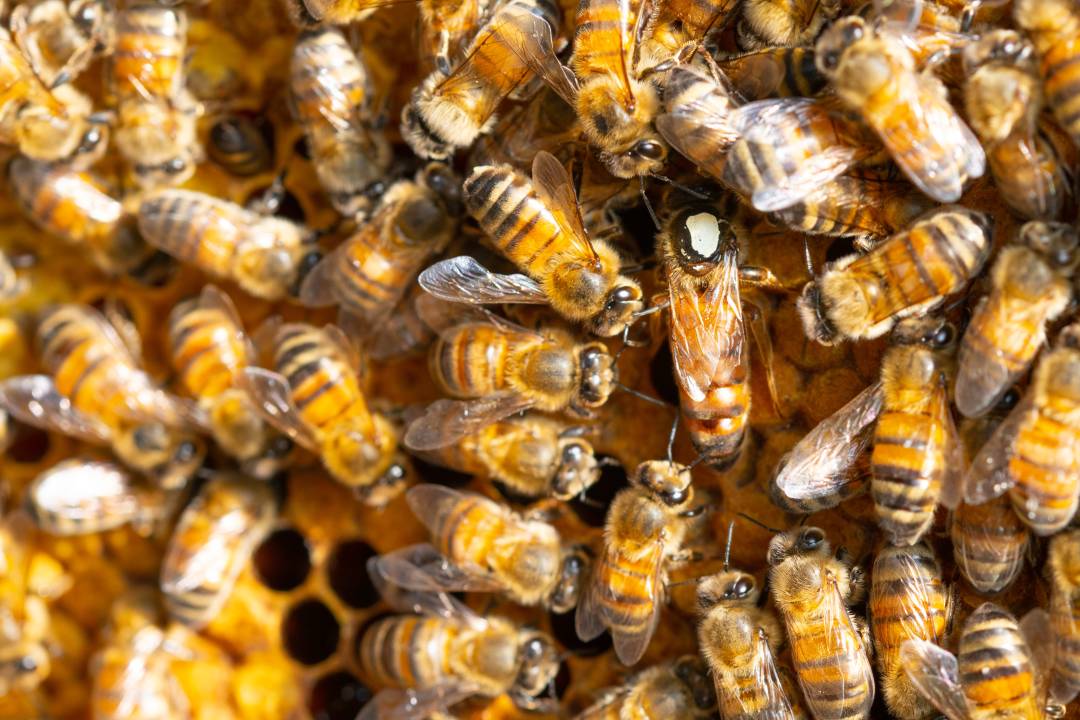
Gender Determination
The queen has complete control over the gender of her eggs. As an egg passes through the ovary to the oviduct, the queen can choose to fertilize the egg with sperm or not. Fertilized eggs become female, worker bees (or queen bees, as discussed in "Royal Reproduction"); unfertilized eggs become male, drone bees.
After the egg is determined, the gender and caste determines its development time table. Drone bees need 24 days to grow from egg to adult; worker bees grow over 21 days; and queens become mature after only 16 days!
Workers bees also have control over the gender of the colony too, though. Workers carry the responsibility of making hive cells, and each kind of bee needs a specific size for its respective egg. Drone bees are much larger than a worker bee, so their egg cells need to accommodate their size; meanwhile, smaller cells are made for worker bees. The queen approaches cells of proper sizes to lay eggs in, therefore the workers influence the gender distribution of the next generation with their work.
The gender distribution becomes a game of balance between the actions of workers and the queen as they work together on the upkeep of the colony. The queen can force the gender she sees fit, and the workers work with her to shape the colony for what's best for their survival.
Royal Reproduction
Queen bees are an exception when it comes to their birth. The defining differences are that the other castes of bees are born in hive cells, fed royal jelly for the first three days, then fed pollen and nectar for the remainder of their larval state. Queens, on the other hand, grow in queen cells and are only fed royal jelly.
Let's talk about what these differences imply. Firstly, a queen egg is a female, fertilized egg that is solely fed royal jelly throughout its entire larval state and life, instead of nectar and pollen. Now, what is royal jelly? Royal jelly is a protein-rich excretion from honey bees' glands--the excretion is akin to milk from a mother, except the substance is more like white snot than milk.
Secondly, the queen cup is designed to raise a queen--either made when a queen bee is nearing her end (end of her life, or end of her reproductive usage) or when a colony becomes queenless. With a cup prepared, an egg will either be laid by a living queen or a fertile egg will be moved into the queen cup. Though, a fertile egg has to be younger than three days old to raise a proper queen.
Why? After three days, fertile larvae are fed the pollen and nectar mixture--which inhibits their ovary (so a queen avoids nectar and pollen like the plague); queens are determined more by the lack of pollen and nectar in their diet than by the pure diet of royal jelly. The queen's ovary will grow to its limit as it develops in its larval state, and the queen will end up 1.5 the size of the other bee castes.
To touch on the queen cup's design briefly, the cup will always be built vertically with the opening on the bottom, and the cup is designed to be built upon and lengthened for the queen's elongated size. The cup is made out of wax that is produced by the honey bees' wax glands, which the bees develop in the abdomen between 12 and 20 days old.
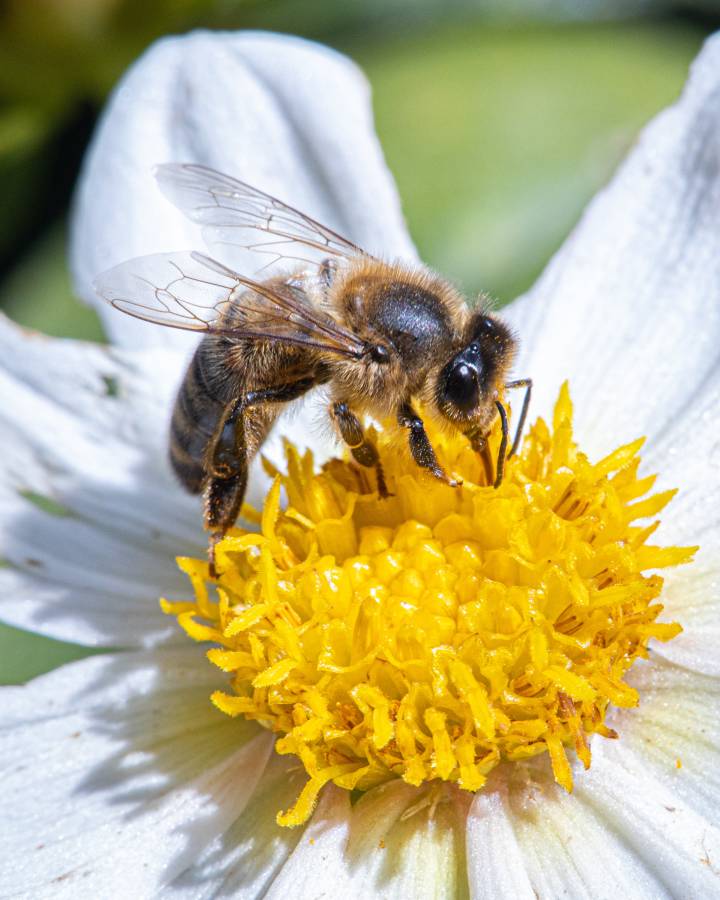
A Life's Worker
The survival of a colony rests on the workers (aside from survival relying on a queen's reproduction). Workers largely nurse the hive and forage for resources, filling key roles with designated tasks that evolve with age. Below, the exact responsibilities will be outlined with the age of a worker that performs the task.
As soon as a worker bee emerges from its larval state, she unconsciously detects the pheromones of the baby bees, and those pheromones kick in the worker's instincts to nurse their younger sisters.
- Days 1-2: Worker bees will start off responsible for cleaning the hive cells and keeping the brood warm.
- All cells are kept clean and sterile before laying eggs or storing honey, and they are responsible for capping the brood cells and securing the larvae. These young bees are responsible for keeping the hive free of disease for the health of the colony.
- This also includes getting rid of diseased or deceased larvae as quickly as possible, taking the carcass as far away from the hive as possible. In the event of a large carcass (like a rodent) stung to death inside the hive, the worker bees will simply cover the carcass with propolis--a sticky, antimicrobial substance collected from trees.
- All cells are kept clean and sterile before laying eggs or storing honey, and they are responsible for capping the brood cells and securing the larvae. These young bees are responsible for keeping the hive free of disease for the health of the colony.
- Days 3-5: Worker bees will feed older larvae.
- Nursing bees will check on their larvae over a thousand times a day!
- Older larvae, eight days before hatching, will be fed 10,000 times a day to satisfy their hunger and let them grow plump before emergence.
- Days 6-11: Worker bees will feed younger larvae
- Habits are similar to their younger nursing sisters feeding older larvae, but the younger larvae are not as hungry.
- Days 12-17: Worker bees will produce wax, build combs, and transport food within the hive.
- During this period, workers will develop wax glands (as previously mentioned). They will use these glands to produce beeswax, build combs, and support the hive's structure. At this age, workers are also responsible for transporting food within the hive to various honey storing locations, organizing what their older sisters forage.
- A worker has to consume eight kilograms of honey just to produce one kilogram of wax.
- During this period, workers will develop wax glands (as previously mentioned). They will use these glands to produce beeswax, build combs, and support the hive's structure. At this age, workers are also responsible for transporting food within the hive to various honey storing locations, organizing what their older sisters forage.
- Days 18-21: Worker bees will guard the hive entrance.
- At this age, her stinger will fully develop, and her duty shifts to guard the entrance. Guardians detect nearby intruders using their senses, primarily by smell. If an intruder gets too close and poses a threat, the guardians will rush to protect the entrance and sting any threat--doing so, as discussed in the Language of the Bees blog, will release a pheromone to signal the threat to nearby workers.
- This pheromone signals other guardians to charge towards the target with the aim of stinging it to death; this pheromone alarm is a potent defense as the threat will receive numerous incoming stings, killing the threat if not deterring it first.
- A worker bee can actually stab other insects or thin-skinned animals multiple times without dying (other bees, wasps, rodents, etc.). However, a bee can only sting an intruding, thick-skinned mammal once, dying as their stinger stays behind.
- At this age, her stinger will fully develop, and her duty shifts to guard the entrance. Guardians detect nearby intruders using their senses, primarily by smell. If an intruder gets too close and poses a threat, the guardians will rush to protect the entrance and sting any threat--doing so, as discussed in the Language of the Bees blog, will release a pheromone to signal the threat to nearby workers.
- Days 22-End: Worker bees are now classified as field bees, instead of hive bees.
- These field bees will travel to flowers and perform the key foraging efforts. Field bees are the ones to thank flower pollination; field bees are also the ones to collect pollen, nectar, propolis, and water in key foraging routines.
- Worker bees have a general life expectancy of six weeks, with the range spreading between 35 and 45 days old.
Winter bees, classified as diutinus bees, are a bit different than their foraging season counterparts, though. As the temperature drops, the queen will halt all reproduction efforts, and the workers' biology changes with this adjustment. The lack of pheromones from baby bees means a worker's nursing instincts won't kick in, so their biology adjusts to a long-living variant; the winter season demands less strain from a worker bee, so their bodies adjust to thrive and care for the queen for the duration of winter.
These diutinus bees will then be the first to fly out and forage as winter thaws, and the cycle starts all over with new six-week patterned bees being laid.
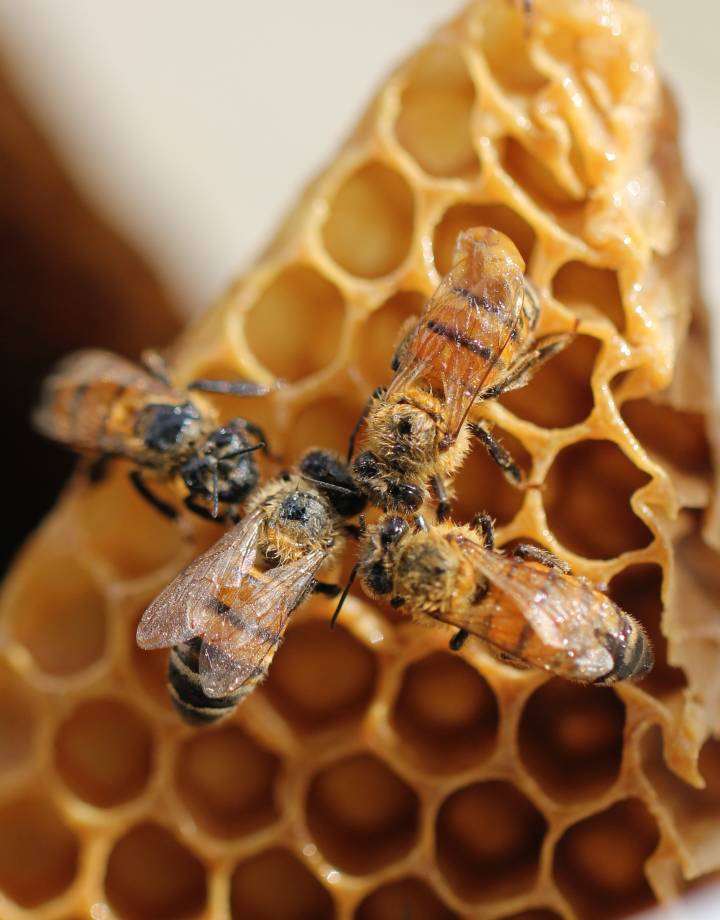
Drone: A Simple Importance
A male drone's role is much simpler than the worker's; a drone's singular purpose is to mate. Only present in the spring and summer, a drone will emerge from his egg and continue to eat three times more than workers as he matures. After a week of maturing, he will start to become sexually active and begin to take flight. His first flights will last only 15 minutes as he simply loops around the hive to become oriented with the hive's location.
Once oriented, a drone will fly to a drone congregation area on sunny afternoons--with a heavy preference of temperatures above 66 degrees Fahrenheit, no rain, and wind speeds less than 60 miles per hour.
He will spend 30 minutes or more at a time on a mating flight at a drone congregation area with many bachelors like him. If he is lucky and successful in mating with a queen, he will die in the process (see Flight of the Mating Bee), and his genetics will be passed on. If unsuccessful, he will simply keep trying as long as he lives, taking flight multiple times a day for every day he can.
While drones do not perform useful hive labor like their female counterparts (even lacking a stinger for hive defense), drones are considered crucial for the genetic diversity they bring in the mating process. Studies show that a colony's chances of survival increases with the number of mates the queen had; genetics are the key factors in determining a colony's size, temperament, and quality. Drones have the key responsibility and purpose to improve the survivability of bees abroad.
Important as they may be, a surplus of drones may stress a colony due to resource consumption--as they continue to consume three times as much as workers throughout their lives--so most hives limit the number of drones at a ratio of one drone for every 100 workers.
As the warmth gives way to sweater weather, any drone still alive will be kicked out of the hive and left to starve as the hive prepares to survive the cold. The hive cannot afford to support a drone's diet during winter, so this banishment is for the greater survival of the colony. Besides, a drone cannot become diutinus, so he could not live for much longer either way.
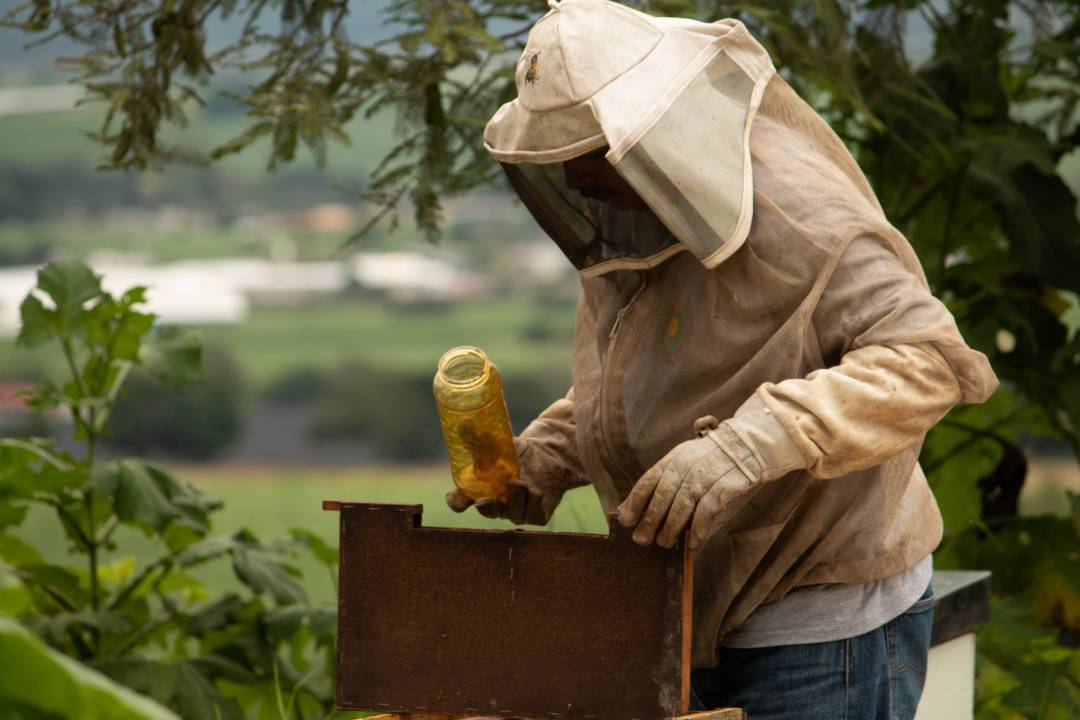
Current Day
Urban beekeepers make the best efforts to save the bees while encouraging their natural cycles to remain consistent. Our beekeepers, amongst others, create homes and make space for our buzzing buddies, especially with habitat loss being a major problem. In addition to providing a stable habitat, beekeepers will either create a feeding frame or grow plants to help with foraging efforts so our bees may have proper resources in our urban areas.
Another way urban beekeepers may help out the bees is by queen grafting. A practice we here at Bee Safe use, queen grafting is the technique of building queen cups and placing fertilized eggs inside. The bees are naturally led to build up a queen cell around the cup and properly raise queens. This technique is used to prepare queens in the scenario that a queen may disappear or die for various reasons; this queen grafting provides a saving grace for queenless colonies that would otherwise fall apart. Now, bees can save themselves if they have the resources; but, if they lack young, fertilized eggs, the colony would die off without our intervention.
Truly, not every beekeeper keeps their bees the same--some only check on their hive twice a year to leave the colony's survival to nature. No matter what though, us beeks are making every effort to save bees out there by making homes in our urbananized world, and we could use your help doing so!
An easy step is to follow us on Instagram, TikTok, Facebook and YouTube @beesafebeeremoval. Every interaction helps get our content out there to actually make a difference. We hope to educate people to make way for truly saving the bees! Though, if you want to do more than interact with our content, feel free to DM us on Instagram or Facebook and ask about what you can do.


